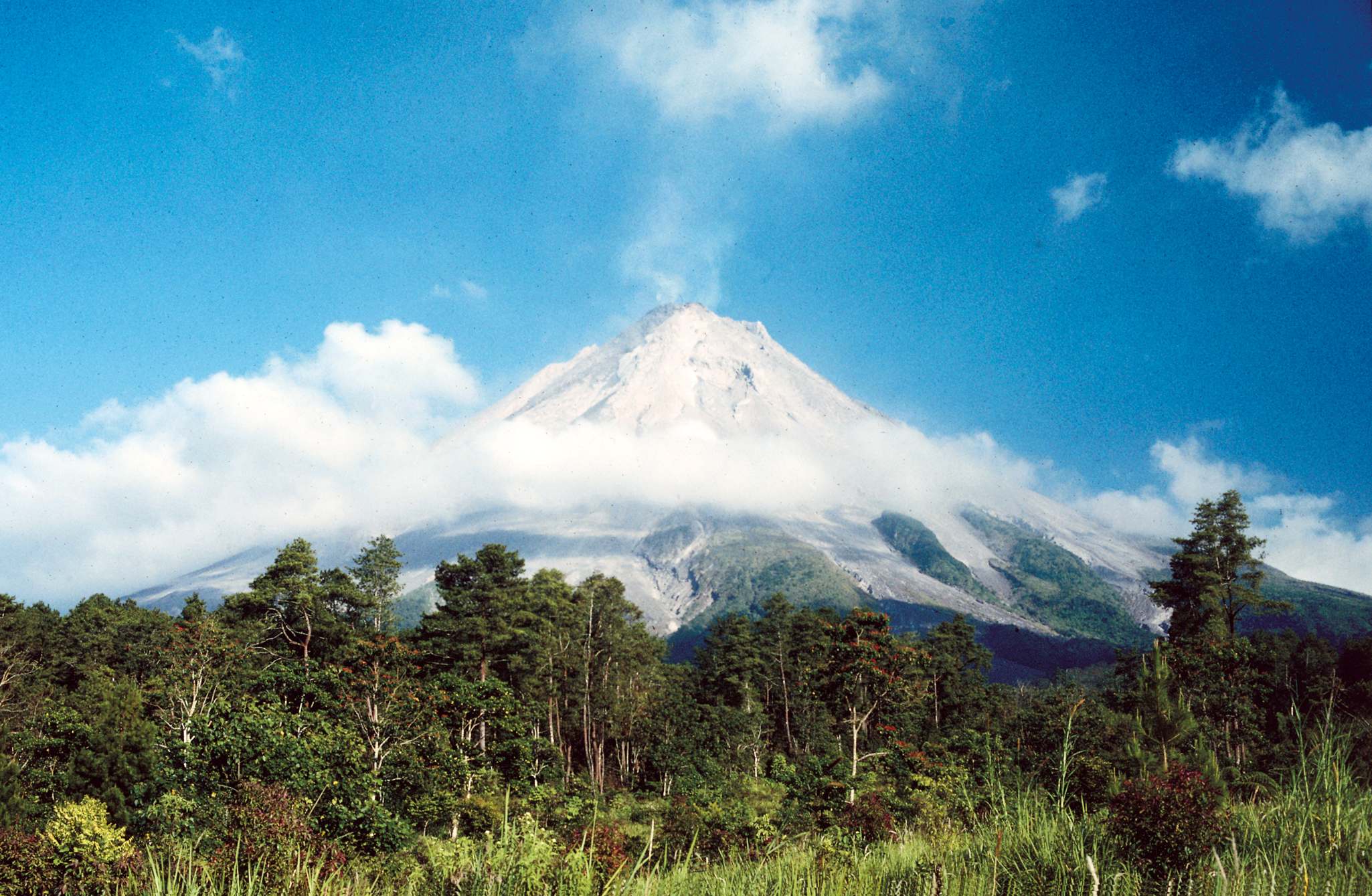Christoph Sens-Schönfelder- sens-schoenfelder@uni-leipzig.de
Institut für Geophysik und Geologie, Universität Leipzig
04275 Leipzig, Germany
Ulrich Wegler
Federal Institute for Geosciences and Natural Resources
30655 Hannover, Germany
Popular version of paper 2pUW7
Presented Tuesday Afternoon, June
5, 2007
153rd Meeting of the Acoustical Society of America, Salt Lake City, Utah
The threat arising from an active volcano is evident form every picture of a volcanic eruption. That's why scientists try to observe changes of a volcano as closely as possible to identify indications of an upcoming eruption. We have added a new important building block to the toolbox of earth scientists for volcano monitoring that we have named "Passive Image Interferometry." The method itself is applicable to various other monitoring experiments in fields such as structural health, geotechnical and reservoir engineering. Results of a first application to the Merapi volcano in Indonesia (figure 1) demonstrates the environmental influence on its interior properties.

Passive Image Interferometry is designed for the precise and continuous monitoring of velocity changes of seismic waves inside the volcano. Such observations are extremely valuable for volcanologists because changes of the seismic velocity may be caused by pressurization or crack opening due to rising magma in the preparatory phase of an eruption. Hitherto such measurements required the excitation of seismic waves by special sources (such as explosive charges) that could be used repeatedly. This required a large and expensive logistical effort and resulted in sparse measurements, perhaps once a month. In contrast, the signal that is used by Passive Image Interferometry is not excited by such expensive sources, but is retrieved from the ambient seismic noise which is recorded by every seismometer. This way we can estimate velocity changes continuously every day, because the seismic noise is omnipresent in the environment. That's why Passive Image Interferometry is not only cheaper, it's also better than existing methods to monitor seismic velocities.
We are presenting an application of passive image interferometry to the Merapi volcano. We can measure day-to-day variations of the seismic velocity. Evaluation of the available two-year period revealed a seasonal trend that we can link to precipitation-induced changes in the groundwater height. This is not the spectacular signal that allows predictions of eruptions. We leave that for the future. Instead it convincingly demonstrates the capabilities of the method because in fact we are able to turn the seismometer into a groundwater gauge.